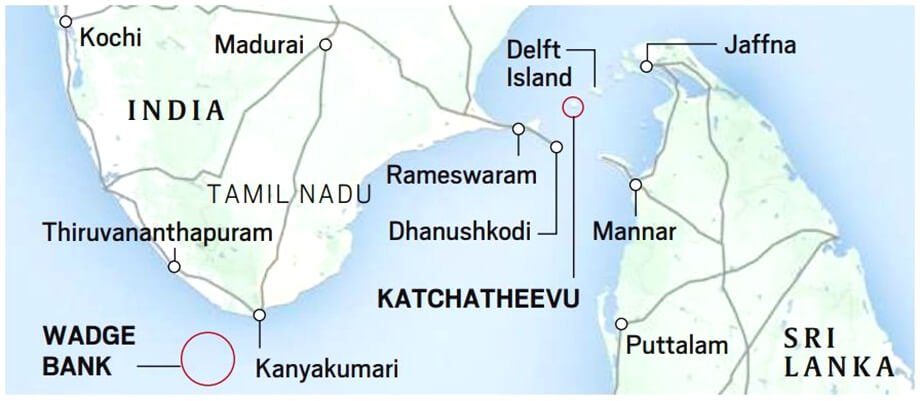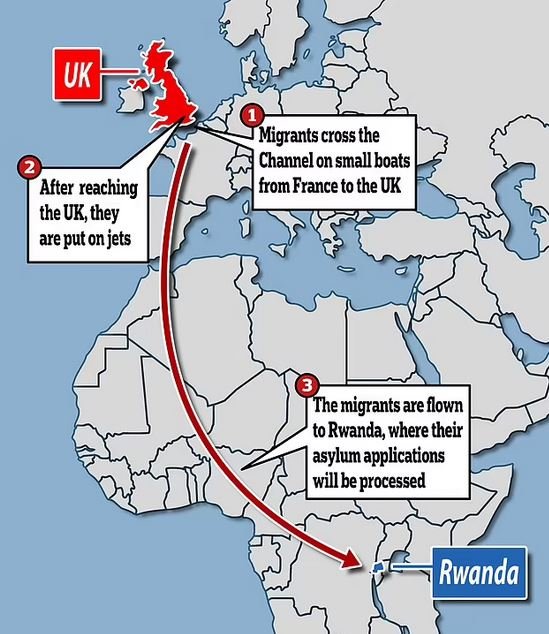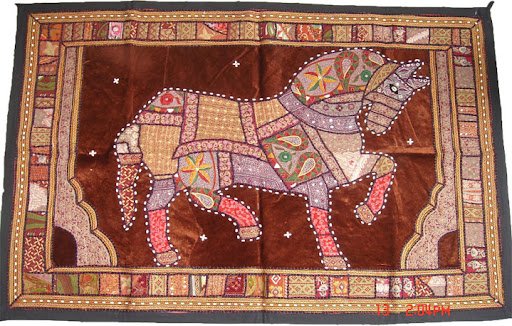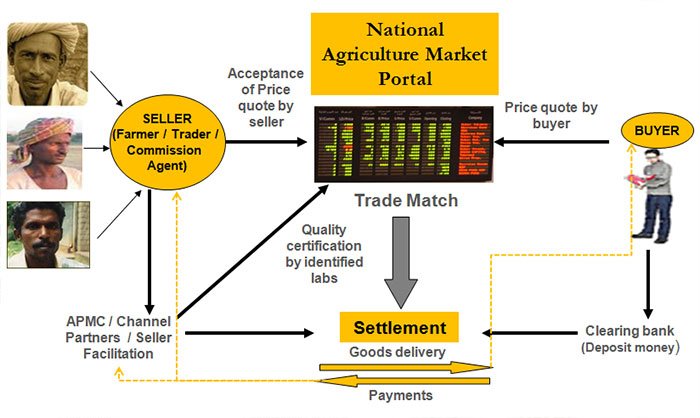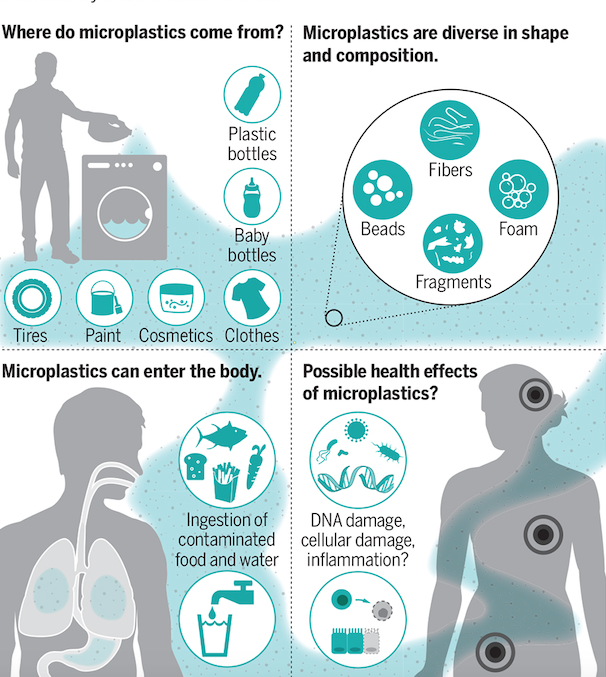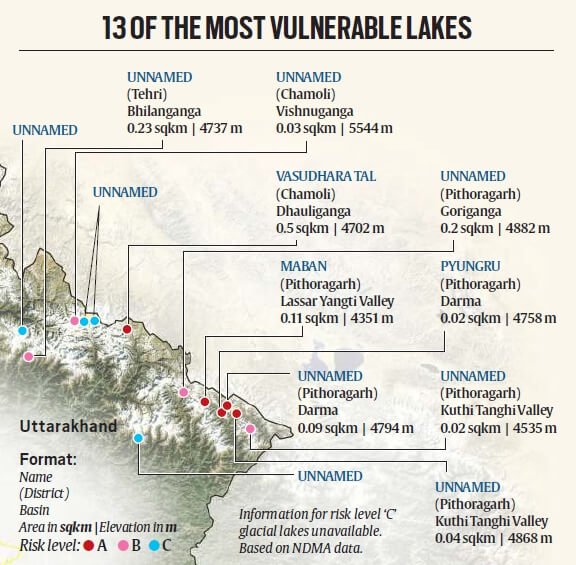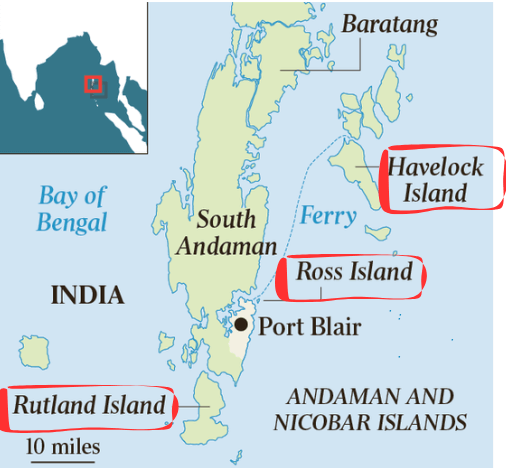
Current Affairs for UPSC Civil Services Exam – May 07, 2024
Subscribers of "Current Affairs" course can Download Daily Current Affairs in PDF/DOC
Subscribe to Never Miss an Important Update! Assured Discounts on New Products!
Must Join PMF IAS Telegram Channel & PMF IAS History Telegram Channel
{GS2 – MoCAFPD – Schemes} SMART-PDS Initiative *
- Context (TH): Kerala will join Scheme for Modernisation and Reforms through Technology in the Public Distribution System (SMART-PDS).
About SMART-PDS Scheme
- It is an initiative of the Department of Food & Public Distribution (DFPD), Ministry of Consumer Affairs, Food and Public Distribution.
- Aim: To prevent food grain leakage and enhance distribution chain efficiency.
- It is a technology-based effort to unite all States’ food distribution networks under one platform.
- Authorities can monitor food grain movement in real-time from procurement to distribution.
- The project’s cost is to be shared by the Union and State governments in a 60:40 ratio.
- The State will bear expenses for three project components: institutional setup/training capacity building, provisioning of cloud infrastructure, and setting up a command control centre.
- Under the scheme, Smart ration cards are issued to beneficiaries. The fingerprint template of the beneficiary is recorded in these smart ration cards, which record all transactions.
{GS2 – Polity – IC – Elections} Candidate Contesting Elections from Two Seats **
- Context (TOI I BS): Over the years, many recommendations have been made on restricting candidates from contesting elections from two seats.
- The SC in 2023 dismissed a plea seeking direction that a candidate in an election cannot contest simultaneously from two constituencies.
- In 20222, the Chief Election Commissioner asked the Ministry of Law & Justice to limit the number of seats a candidate can contest to one and implement one candidate in one constituency.
Provisions Related to Twin Candidature
- Section 33(7) of the RPA (Representation of the People Act), 1951: One candidate can contest from a maximum of two constituencies.
- Prior to the insertion of clause 7 in Section 33 in 1996, candidates could contest from several seats, but later, one person could contest only from two seats.
- Candidates must vacate one seat if they emerge victorious in both, as established by the RPA,1951.
Reasons for contesting from two Constituencies
- The RPA allows a person to contest in more than one constituency and also contest anywhere in the country he/she wishes to.
- Amending section 33 (7) of the RPA, 1951, may infringe on the rights of candidates contesting elections and curtail the choice of candidates for the polity.
- The RPA, 1951 provision provides for wider choice for the polity and the candidate and is in line with the country’s democratic setup.
- Many politicians contest from more than one seat –
- To divide the opponent’s vote,
- To profess their party’s power across the country and
- To cause a ripple effect in the region surrounding the constituencies in favour of the candidate’s party.
- A leader can show that he/she has the support of the people across the country.
- Parties often expect that having big names or well-liked leaders contest from more than one seat will convince more people to come out and vote.
Arguments against Twin Candidature
Waste of Resources
- Campaigning and contesting in multiple constituencies can be a waste of Resources and Money, both for the candidate and the government.
- After sacrificing one of the Constituencies, a by-election is immediately triggered, which again increases the burden on the Public Exchequer.
Voters Lose Interest
- Repeated elections are not only unnecessary and costly, but they will also cause voters to lose interest in the electoral process.
- Fewer voters will most likely turn out to vote in the by-election than in the first election a few days earlier.
Conflicts of Interest
- Running in multiple constituencies can create conflicts of interest, as the candidate may not be able to devote equal time and attention to each of their constituencies.
Paradoxical Provisions
- Section 33(7) of the RPA leads to a situation where it would be negated by another section of the same Act – specifically, Section 70.
- While 33(7) allows candidates to contest from two seats, Section 70 bars candidates from representing two constituencies in the Lok Sabha/State Assembly.
Voter Confusion
- Voters in different constituencies may be confused about which candidate is representing them or which candidate they should vote for.
Perception of Corruption
- Running in multiple constituencies can raise questions about a candidate’s motivation and create the perception of corruption, as they may seek multiple seats to increase their chances of winning.
Threat to Democracy
- Twin candidature can be seen as a threat to democracy, as it can undermine the principle of fair and equal representation.
- The dictum of democracy is ‘one person, one vote’ and ‘one candidate, one constituency’.
Recommendations of the Election Commission
- The Election Commission (EC) recommended amending Section 33(7) so as to allow one candidate to contest from only one seat.
- It did so in 2004, 2010, 2016 and in 2018.
- The GoI has opposed EC’s proposal to bar a candidate from contesting from two assembly or Parliamentary constituencies during elections.
- In its 255th report, in 2015, the Law Commission agreed with the EC’s suggestion of one candidate for one seat.
- A system should be devised where if a candidate wins in two constituencies, they will bear the financial burden of conducting a subsequent by-election in one of them
- The amount would be Rs 5 lakh for a Vidhan Sabha election and Rs 10 lakh for an LS election.
{GS2 – Polity – IC – Elections} Political Party and Third Party Electoral Funding *
- Context (TH I ET): Experts have described the 2024 general elections as the most expensive in the country’s history.
- The Representation of the People Act, 1951 (RPA) sets spending limits for candidates but does not restrict political party and third-party spending.
- The projected expenditures for the 2024 general elections far exceed the 2019 poll spending, which topped out at Rs 55,000-60,000 crore.
- According to International IDEA, 65 countries around the world, including the U.S., the U.K., Canada, and Brazil, have a cap on election expenditure of political parties.
- This framework starkly contrasts with the scenario in India, where the absence of such caps has led to a lopsided expenditure landscape.
Third-party Campaigners
- Third-party or non-party campaigners refer to individuals or groups participating in campaign activities during elections without being formally registered as political parties or candidates.
- However, the term has not been clearly defined in the Indian electoral laws.
- While the issue of regulating political party expenditures is widely discussed and debated, regulation of third-party involvement is often overlooked.
Impact funding by Political parties and Third-Party campaigners
- The Big National Parties like BJP and Congress have deep pockets with respect to other national parties and state political parties. This has not only opened the floodgates for parties’ unchecked expenditures but also paved the way for a skewed level playing field in which financial muscle trumps meritocracy.
- Record-breaking election spending is set to ignite rural demand, boosting sales.
- The exorbitant sums poured into campaigns tilt the scale of competition, disadvantaging independent or less financially endowed candidates.
- The unchecked expenditures and the nature of content posted by third-party campaigners raise severe issues around the lack of transparency and accountability of such actors.
- Without the electoral bond scheme, the absence of third-party expenditure regulation could lead to increased quid pro quo and unaccounted money in elections.
To know more on Recommendations for electoral funding> Electoral Funding & Recommendations.
{GS2 – Vulnerable Sections – Transgenders} NALSA Verdict and Present Status of Transgenders **
- Context (TOI): Ten years after the NALSA judgment, significant changes for transgender individuals remain elusive in practice.
- Experts argue that while the landmark judgment recognised the community normatively, efforts over the past decade to translate it into a significant impact have been lacking.
- The judgment led to the enactment of The Transgender Persons (Protection of Rights) Act, 2019.
SC judgement in National Legal Services Authority Vs Union of India, 2014
- The court relied on various judgements from foreign courts, such as those in New Zealand, Australia, Malaysia, and England.
- It made a distinction between Biological sex and Psychological sex. It said no to gender identification based on biological sex and gave full importance to identification based on psychological sex.
- It ruled that all international convention provisions, including the Yogyakarta Principles, must be followed if they align with the fundamental rights guaranteed by Part III of the IC.
- The State and GoI must grant transgender people full recognition in the eyes of the law so that they can get education and healthcare without being subjected to any discrimination. It also decided that Hijras and Eunuchs are to be treated as the “third gender”.
- It directed the GoI and states to set up separate HIV Zero-Surveillance Centers, provide separate public toilets, and ensure proper medical care for transgender individuals in hospitals.
- It held that transgender people fall within the purview of the IC and, thus, are fully entitled to the rights guaranteed therein.
- Article 14: Guarantees equality to “any person”, which means man, woman, and transgender, and as such, they are also guaranteed equal protection by the law.
- They have equal rights in employment, health care, education, and civil rights.
- Discrimination based on sexual orientation and gender identity constitutes a violation of FRs.
- Article 19: Transgender individuals have freedom of expression, wherein they can talk, dress, act, and behave in a manner they like.
- Article 21: They also have a right to live a life of dignity.
- Article 14: Guarantees equality to “any person”, which means man, woman, and transgender, and as such, they are also guaranteed equal protection by the law.
Issues faced by transgenders
- Lack of Legal Protection: They are subjected to custodial violence, dereliction of duty by the state and overall apathy to their issues such as educational, residential, medical and employment.
- Poverty: Lack of legal protection translates into unemployment for transgender people. They’re denied services and experience high rates of unemployment, housing insecurity and marginalisation.
- Harassment and Stigma: They are met with ridicule from society and are considered mentally ill, socially deviant and sexually predatory.
- Anti-Transgender Violence: They endure forced gender conformity, aversion-based therapies, forced marriages, stripping, abuse, and sometimes familial pressure into prostitution.
- Barriers to Healthcare: Their exposure to primary healthcare is minimal as they are subject to apathy from the medical fraternity, with professionals lacking transgender healthcare competency.
What is the Timeline of Reforms for Transgender Persons?
- 2009: the EC issued appropriate directions to all states to amend the registration forms’ format to include an option of “others.”
- This enabled transsexual people to tick the column if they didn’t want to be identified as either male or female.
- 2014: The SC in NALSA Vs. Union of India (2014) recognised them as the “Third Gender”.
- In the landmark ruling, SC observed that “recognition of transgender people as a third gender is not a social or medical issue, but a human rights issue”.
- 2014: The Rights of Transgender Persons Bill was introduced as a private member’s Bill and passed by the Rajya Sabha in April 2015.
- 2019: The Transgender Persons (Protection of Rights) Act was enacted.
- 2020: Transgender Persons (Protection of Rights) Rules were framed under the Transgender Persons (Protection of Rights) Act, 2019.
- 2020: The Ministry of Social Justice and Empowerment launched
- A National portal for transgender persons in 2020 and
- The National Council for Transgender Persons (NCTP), a statutory body, was established.
- Garima Greh, a shelter home for transgender people was established.
- The Ministry of Home Affairs sent an advisory to Heads of Prisons in the States/UTs to ensure the privacy and dignity of third-gender inmates in 2022.
National Portal for Transgender Persons
|
Transgender Persons (Protection of Rights) Act, 2019
- Definition of Tansgenders: According to the Act, transgender means a person whose gender does not match with the gender assigned to that person at birth.
- It includes trans-person with intersex variations, gender-queer and persons having such socio-cultural identities as kinnar, hijra, caravan and jog.
- Prohibition Against Discrimination: It prohibits discrimination against transgender people in relation to opportunities for education, jobs, health care services, access to services, etc.
- Right to be Recognized as Transgender: Every person has a right to be recognised as transgender.
- A certificate of identity must be obtained from the District Magistrate, who will issue it based on the District Screening Committee’s recommendation.
- The Act calls for establishing a National Council for Transgender Persons (NCT).
- Right of Residence: No transgender person shall be separated from parents or immediate family on the grounds of being transgender.
- Health Care: The Act also seeks to provide rights of health facilities to transgender persons, including separate HIV surveillance centres and sex reassignment surgeries.
- It also states that the government shall review medical curricula to address the health issues of transgender persons and provide comprehensive medical insurance schemes for them.
- Penal Provisions: It criminalises:
- Begging, forced or bonded labour
- Denial of use of a public place;
- Denial of residence in the household, village, etc.;
- Physical, sexual, verbal, emotional and economic abuse.
Challenges Associated with the Act
- Transgender persons are not appropriately defined and the Act does not have any provision for self-determination of gender.
- The Act doesn’t address transgender reservations, despite the 2014 SC NALSA judgment based on their social and educational backwardness.
- The criminalization of begging impacts transgender individuals who rely on it for income, like through dancing or singing, without providing alternative social security measures.
- It sets lighter consequences for discrimination and assault on Trans people compared to cis-gender people, which prescribes a jail sentence of 7 years for sexual assault on women.
|
- The Act treats transgender as victims rather than an empowered subject with rights.
- The Standing Committee’s concerns about recognising rights in marriage, divorce and adoption of transgender persons have not been addressed.
- The Act violates the transgender’s constitutional Right to Freedom of Residence under Article 19, as they must either stay with their parents or approach a court.
{GS3 – Envi – Degradation} Severe Coral Bleaching in Lakshadweep
- Context (IE): The ICAR-Central Marine Fisheries Research Institute (CMFRI) has found that coral reefs in the Lakshadweep Sea have undergone severe bleaching due to prolonged marine heatwaves since 2023.
Warming Indian Ocean
- Due to the rapid warming in the Indian Ocean and strong El Niños, marine heat waves have increased. Earlier, these heat waves were rare in the tropical Indian Ocean, but now they are an annual affair.
- The western Indian Ocean region experienced the largest increase in marine heat waves, at a rate of about 1.5 events per decade, followed by the north Bay of Bengal, at a rate of 0.5 events per decade.
- An underwater survey showed that 85% of the corals in the Gulf of Mannar near the Tamil Nadu coast got bleached after the marine heatwave in 2020.
Coral bleaching and temperature surge in Lakshadweep Sea
- Corals experience thermal stress when sea surface temperatures exceed 1 degree Celsius above the maximum mean temperature, worsening if they exist for a longer period.
- Lakshadweep Sea is experiencing temperatures 1 degree Celsius above the norm since October 2023.
- Degree Heating Week (DHW) values above 4 degrees Celsius weeks cause significant coral bleaching — a threshold that Lakshadweep has now crossed.
|
- Shifts in ocean currents also lead to unusually high water temperatures.
Impacts of rising coral bleaching
- The heat waves threaten the livelihoods of coastal communities, tourism and fisheries sectors, and critical marine habitats, including seagrass meadows.
- Similar to corals, seagrass meadows and kelp forests are experiencing detrimental impacts from the heat waves, such as impaired photosynthesis, reduced growth, and hindered reproductive functions.
- Coral reefs form Lakshadweep, and the health of reefs is important for the islands’ structure.
- Death of coral may lead to the accumulation of organic matter, preventing future formation of corals.
{GS3 – Envi – Species} Tiger translocation to Sahyadri Reserve *
- Context (IE): Maharastra is gearing up for the translocation of a few tigers from the Tadoba-Andhari Tiger Reserve (TATR) in Chandrapur to Sahyadri, the lone tiger reserve in the state’s western region.
- It is part of a long-term plan to revive the big cat population in the northern Western Ghats forests.
- It serves as a tiger corridor connecting tiger populations in Sahyadri Reserve, Radhanagari Wildlife Sanctuary, Amboli Reserve forest in Maharastra, Mhadei Wildlife Sanctuary in Goa and Bhimgad Wildlife Sanctuary and Kali Tiger Reserve in Karnataka, according to the government’s All India Tiger Estimation report, 2023.
- The National Tiger Conservation Authority (NTCA) cleared the translocation plan in 2023, and final approval from the Union Environment Ministry is awaited.
- In the initial phase, a male tiger or a pair of male and female tigers would be translocated. The later phase involves the translocation of eight tigers from the Pench Tiger Reserve landscape.
- It will be a soft release, which involves monitoring tiger in an enclosure before releasing it into habitat.
- Tranquilisation of tiger for translocation is permitted under Section 12 of the Wildlife Protection Act.
Section 12 of the Wildlife Act 1972
|
- The STR forest department has already completed phase I, which involves preparing the habitat for the big cats’ reintroduction, augmenting prey, improving forest protection, and building a temporary enclosure for their soft release.
Sahyadri Tiger Reserve (STR)
|
{GS3 – IE – Employment} India Employment Report 2024 **
- Context (IE): The findings of the India Employment Report 2024.
- India Employment Report 2024 is developed by the Institute for Human Development (IHD) and the International Labour Organisation (ILO).
Positive developments in the Labour market
- Employment quality has improved in all states, though at different rates.
- Non-farm employment increased & agriculture employment declined (between 2000 – 2019).
- Regular employment increased & unorganised sector employment declined (except Covid years).
- Female workforce participation rate increased from 24.5% in 2019 to 37.0% in 2023.
- Most of this increase was in agriculture, and many were in own-account or unpaid family work.
- Wages of casual workers increased from 2019 to 2022, especially for lower-income groups.
- Unemployment declined from 6% in 2018 to 3.2% in 2023.
- Youth unemployment declined from 17.8% to 10%.
Persisting Challenges in the Labour Market
- Agriculture still employs a large portion of workers, about 46.6%.
- More capital and skill-intensive production processes are causing imbalances in the labour market.
- Despite higher education levels, there are many unskilled and semi-skilled workers.
- Women’s workforce participation is low, often in lower-paying jobs (agriculture, unpaid family work).
- The proportion of youth not employed, educated, and trained (NEET) is around 28% in 2022.
- The share of females is around five times more than males.
- There are mismatches between qualifications and skills, especially at higher education levels.
- Most jobs are informal and not very productive (90% of employment is informal).
Policy recommendations
- Making production more labour-intensive.
- Improving job quality through strong wage growth, social protection, and efforts to formalise jobs.
- Reducing labour market inequalities (especially for women).
- Improving skills training and job matching.
- Improving statistical data collection to understand changing labour market patterns better.
{GS3 – IE – Industry} New I-T Clause Poses Problem for MSMEs **
- Context (IE): A new tax clause, introduced in Budget 2023-24, is causing an issue for large companies.
The new tax clause & its unintended consequences
- The Finance Act 2023 added a new clause (h) to section 43B of the Income Tax Act. According to the clause, if a buyer doesn’t pay an MSME within 45 days, they will be taxed on the unpaid amount.
Impact on large companies & MSMEs
- Resulted in increased tax liability for bigger companies during audits.
- Big companies started moving their business to unregistered MSMEs, which allowed them to avoid meeting the mandatory payment provision.
- Unregistered MSMEs can continue with longer payment cycles of 90-120 days.
- Eventually, this led to many MSMEs reporting the cancellation of orders.
Suggestions
- Mandatory bill discounting and extending payment timelines can be the solutions.
{GS3 – S&T – Space} Starliner Spacecraft
- Context (IE): Boeing’s Starliner spacecraft will carry two NASA astronauts to the International Space Station (ISS) on May 7.
- Significance of this mission: Currently, NASA relies on SpaceX alone for ISS trips. Starliner’s approval for regular flights would give NASA a backup option.
About Starliner
- It is a partially reusable crew capsule, officially known as CST-100.
- It consists of two modules: the crew module and the service module.
- The crew module can carry up to 7 astronauts & can be reused up to 10 times, with a turnaround time of six months. The service module supplies power, propulsion, and other essentials in space.
{Prelims – Envi – Species} Walrus (Odobenus rosmarus)
- Context (WION): The first case of a walrus dying from bird flu was recorded on an Arctic island.
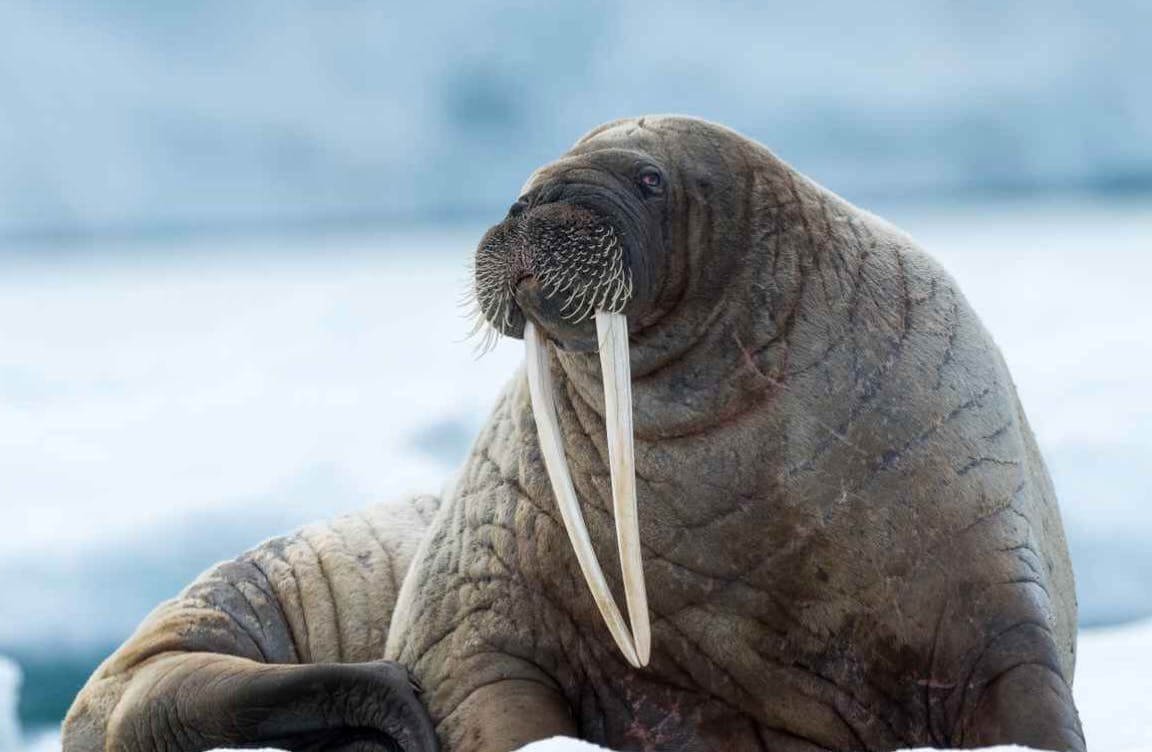
- Walruses are the largest pinnipeds (includes the seals and sea lions) marine mammals found in the Arctic and subarctic seas of the Northern Hemisphere.
- Habitat: Walruses inhabit areas in the Arctic that are largely made up of ice. Walruses prefer areas with shallow water so they can easily access food.
- Range: There are two subspecies of Walrus: Atlantic and Pacific Walrus. The Atlantic walrus lives in the seasonally ice-covered northern waters of Canada, Greenland, Norway and Russia. In contrast, the Pacific walrus occupies from the Bering to the Chukchi Seas, as well as the Laptev Sea.
- The walrus has a tusk on each side of its mouth, which it uses to haul itself out of the water and onto the sea ice, fight with other walruses, and defend against predators.
- Walruses have thick skin that ranges from light grey to yellowish brown. A thick layer of fat below the skin, called blubber, keeps the walrus warm.
- Diet: They feed mainly on invertebrates such as clams and snails found on the bottom of the relatively shallow seas.
- Conservation Status: IUCN: Vulnerable.
- Threats: Hunting for oil, ivory and hides, climate change.
- Significance: It is a keystone species in Arctic marine ecosystems.
{Prelims – In News} Appointment of first GST Appellate Tribunal (GSTAT) *
- Context (PIB): Union Finance Minister administered oath to first GSTAT President Justice (Retd) Sanjaya Kumar Mishra, which was established under the Central Goods and Services Tax Act of 2017.
- It is expected to become functional from July 1, nearly seven years after the GST introduction.
- Selection was done by a Search-cum-Selection Committee headed by the Chief Justice of India.
- GSTAT is second appellate authority for appeals against orders under CGST Act & State GST Acts.
- Locations: Principal Bench in Delhi headed by the President with two technical Members, one each from the Centre and States. It also has 31 State benches.
Qualifications for members
- Has to be a judge of the High Court.
- Or retired District Judge or Additional District Judge with a minimum of 10 years of experience.
- Or lawyer with more than 10 years of experience, especially in indirect tax litigations.
{Prelims – In News} Catatumbo Lightning
- Context (TH): Near-constant lightning strikes over Venezuela’s Catatumbo River.
- Catatumbo lightning is a natural phenomenon that occurs over the Catatumbo River in Venezuela, where lightning strikes almost continuously. It is named after the Catatumbo River.
- This phenomenon primarily happens at the mouth of the Catatumbo River, where it meets Lake Maracaibo, the largest lake in Venezuela.

The science behind the lightning
- Warm, moist air from the Caribbean Sea is pushed towards the Andes mountains, where it collides with cooler air descending from the peaks.
- This collision creates a storm of sorts, as the warmer air is forced to rise rapidly by the shape of the local landscape. And as it does, it cools and condenses, forming towering cumulonimbus clouds.
- Meanwhile, the combination of strong winds and temperature differentials generates electrical charges within these clouds.
- When the electrical potential within the clouds becomes too great, it discharges in the form of lightning.
{Prelims – In News} Goldene
- Context (IE): For the first time, researchers have created a free-standing sheet of gold, making gold the first metal to be formulated into (freestanding) 2D sheets.
- Goldene is the first free-standing 2D metal and is only one atom thick.
How was it created?

Credits: Nature
- The technique used to create Goldene can also be used for other metallic objects, work on making 2D sheets of iridium and platinum is in process.
Applications
- It holds promise as a great catalyst because it is much more economically viable than thicker, three-dimensional gold.
- Future applications include carbon dioxide conversion, hydrogen-generating catalysis, selective production of value-added chemicals, hydrogen production, water purification, light sensing devices, etc.
{Prelims – Sci – Bio} Bacteria Causing Cancer
- Context (TH): A new study has identified a distinct subtype of Fusobacterium nucleatum bacteria that is related to colorectal cancer (CRC).
- It lives in the human mouth and is rarely found elsewhere. However, in cases of CRC, the bacteria are found in gut tumours.
- From there, they help cancer cells escape from the immune system and spread to other parts of the body.
- CRC is the seventh most common type of cancer in India, with cases rising by 20% from 2004 to 2014.
- Though the numbers have declined globally, the incidence of age-adjusted early-onset CRC has risen at an alarming rate of 2-4% in many countries.
Fusobacterium nucleatum
- Out of the four known Fusobacterium nucleatum subspecies, only Fusobacterium nucleatum animalis (Fna) was significantly associated with CRC tumours.
- Fna is composed of bacteria from two different evolutionary lineages (clads): Fna C1 and Fna C2.
|
- Fna C2 bacteria looked longer and thinner than Fna C1 bacteria.
- Genetically, Fna C2 bacteria had genes required to munch two compounds for energy in the human gut: ethanolamine and 1,2-propanediol.
- Fna C2 bacteria’s ability to associate with CRC tumours was at least partly contingent on them “having increased nutrient scavenging mechanisms and enhanced metabolic potential”.
Possible routes for bacteria moving from mouth to gut
- Fusobacterium bacteria could go from the mouth to the gut by infecting the bloodstream during too-hard brushing or routine dental procedures.
- Bacteria could have descended through the gastrointestinal tract to reach the colon.
- Bacteria don’t usually take this path because they can’t survive the stomach’s highly acidic environment, with Fna C2 being an exception.





![PMF IAS Environment for UPSC 2022-23 [paperback] PMF IAS [Nov 30, 2021]…](https://pmfias.b-cdn.net/wp-content/uploads/2024/04/pmfiasenvironmentforupsc2022-23paperbackpmfiasnov302021.jpg)


